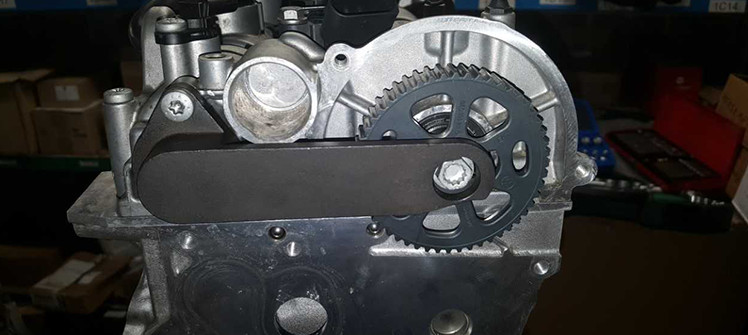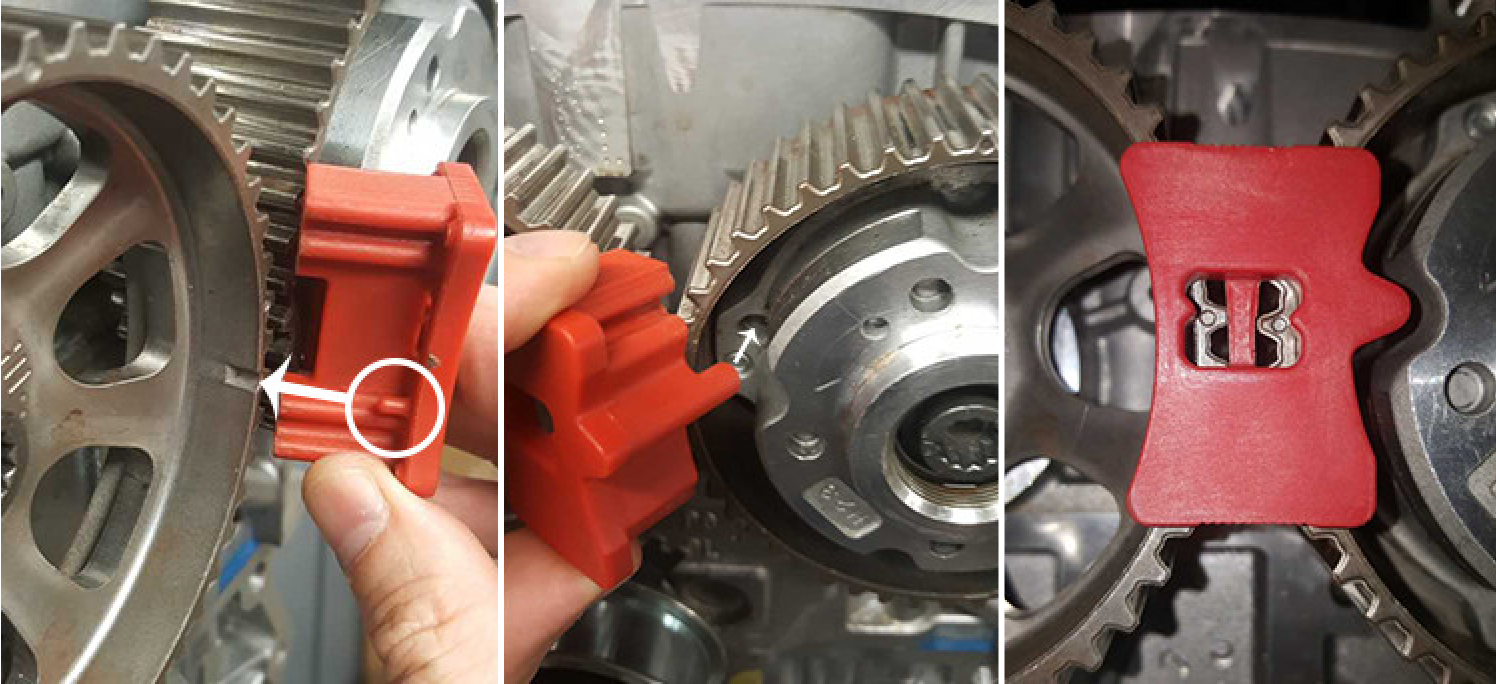Engine technology is evolving rapidly, as manufacturers continue to improve their designs to meet increasing efficiency and performance demands. The recent VAG 1.0 3-cylinder petrol engine is a case in point. Its main novelty? While the technology of non-round pulleys has been used on 4-cylinder engines for quite a long time, this new 3-cylinder petrol engine now has camshaft pulleys with a rounded triangular shape. Read on to find out what this means for timing belt tension and the timing belt change procedure.
Non-round pulleys for optimised belt dynamics
The particular, non-round shape of the camshaft pulleys of the VAG 1.0 3-cylinder petrol engine ensures a belt dynamic tension optimisation. To discover the reasoning behind this improvement, it’s enough to keep an engine’s combustion cycle in mind. During the intake or suction phase, the piston is moving down, while at the next stroke (compression), it compresses the mixture of air and fuel – followed by strokes three and four, namely combustion and exhaust. These different strokes cause significant belt tension variation throughout the combustion cycle. By means of the pulley design, i.e. by using a non-round design with a defined amplitude and phasing, this tension variation is countered. The result: an optimised belt tension.
VAG 1.0 3-cylinder petrol engine: the timing belt change procedure, step by step
Needless to say, the positioning of those non-round pulleys is extremely important. Hence a timing belt change on a VAG 1.0 3-cylinder petrol engine requires the proper tools, i.e. a timing tool kit (GAT5140 in the case of the VAG 1.0 3-cylinder petrol engine) and the appropriate camshaft pulley holding tool (GAT4844) and the crankshaft holding tool (GAT5169).
The first step is to put the engine’s first cylinder in top dead center or TDC, and to lock the crankshaft (locking pin on the side) and the camshaft at the rear (see the picture below). (The water pump is driven by a small timing belt without a tensioner. Note: not all timing belts have a synchronising function.)

Next, you have to loosen the camshaft pulley bolts while holding the pulleys in place (right bolt behind plug). Loosen the exhaust camshaft pulley (left) from the conical axle; loosen the belt tensioner pulley bolt while holding the tensioner in place; rotate anti-clockwise (till the retaining lug is situated at the bottom of the slotted hole).
Remove the belt. Replace the tensioner and the idler and fit the camshaft pulley locking tool to secure the location of the two camshaft pulleys, so that they remain in the exact position at which their non-roundness will work to the advantage of the engine (otherwise they will increase belt tension fluctuation rather than reduce it). The dots on both pulleys (at +/- 3 and 9 o’clock (and 12 o’clock)) will not be perfectly lined up.
Install the new belt (crankshaft, tensioner, camshafts and idler); make sure it is taut on the left side! Remove the little camshaft pulley locking tool; rotate the tensioner clockwise until the pointer is ten millimeters past the notch (window). Bring the pointer back to the middle of the window and torque the bolt (25 Nm).

Lock the camshaft bolts to 50 Nm. It is crucial to keep holding them in place while doing so.
Install the crankshaft Micro-V pulley, using a torque of 150 Nm and then turning it through another 180 degrees (use the GAT5169 tool). Remove the locking tools; rotate the engine two revs to top dead center; reinstall the locking tools (crankshaft and rear camshaft). If this proves impossible, restart from the beginning. If this does prove feasible, torque the camshaft sprockets a further 90 degrees while holding them in place.
Bring the tensioner pointer back to the middle of the notch (25Nm).
Every engine requires its specific procedure
Changing a timing belt on a VAG 1.0 3-cylinder petrol engine may look like a standard routine, but the step-by-step procedure explained above goes a long way to showing that every engine has its own quirks and may call for a unique approach or another manner of operation. What’s more, the non-roundness of the VAG 1.0 3-cylinder petrol engine’s pulleys is hard to spot. You will only notice it when slowly rotating the loosened pulley with your finger or rolling it across a flat surface.